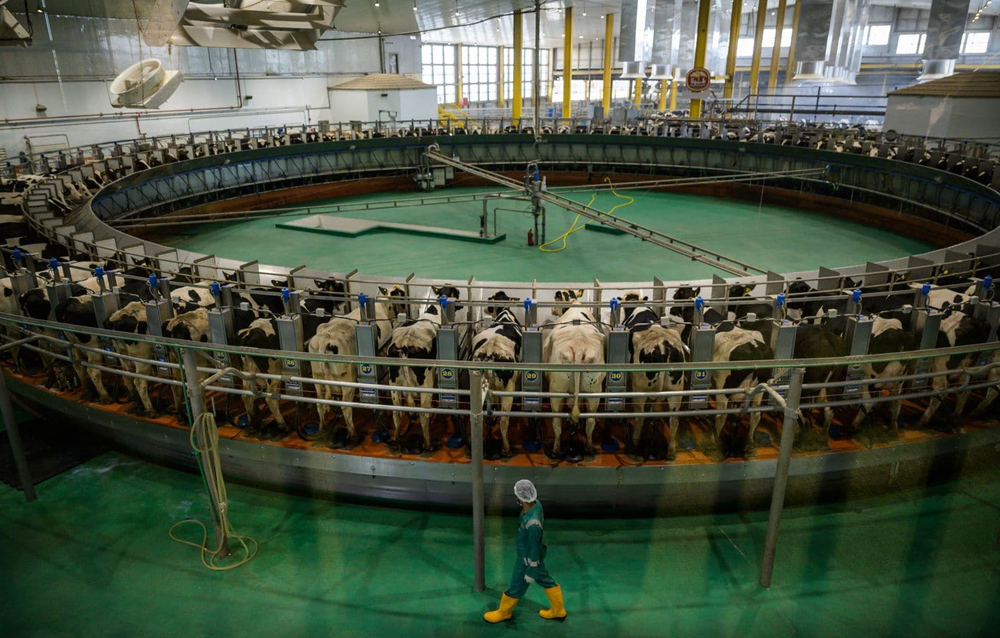How Qatar’s Cows Show the Growing Resistance to a Saudi-led Boycott
July 22, 2019AL KHOR, Qatar — Three times a day, the Holstein cows on this dairy farm north of Doha placidly step onto a circular platform to get hooked up to automated milking tubes.
Afterward, they get sprayed with cool water and go back to one of the 40 state-of-the-art barns where misting and cooling systems keep the summer temperature at roughly 82 degrees, well below the brutal 110 degrees outside on Qatar’s scrubland.

The cows, about 20,000 of them, rest on beds of cooled sand. They do everything but yoga, joked Saba Mohd N.M. Al Fadala, the farm’s public relations director, of the comfortable conditions.
Two years ago, none of this was here.
That left this Persian Gulf nation — rich in oil and natural gas — having to rethink how to get everything from construction materials to milk.
Now this farm, called Baladna, or “our country,” with its five “milking parlors,” provides enough milk for the domestic market in addition to making products such as cheese and yogurt. The company has even started exporting products.
“This is one of the biggest successes since the blockade,” said Adam Peffer, a Michigan native who worked in Dubai and other countries before coming to Qatar to manage the dairy farm operations. “If there had been no blockade, this wouldn’t be here. It shows the importance of food security.”
The Baladna farm is the most prominent example of Qatar’s push for self-sufficiency.
For more info click >> The Washington Post, July 21, 2019.
